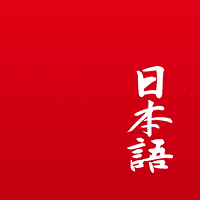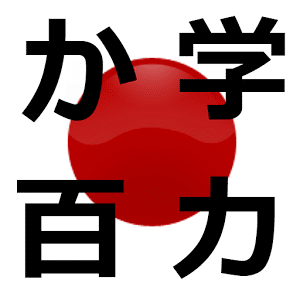
11 Japanese Grammar Apps to Study on the Go
Do you prefer learning a language on your phone?
Using a Japanese grammar app can increase your rate of progress and memory retention through more frequent review.
Also, you can take your learning with you anywhere you take your smartphone, and just a few minutes a day can add up to a significant amount of time spent learning. So scroll on!
Contents
- 1. Tae Kim’s Guide to Japanese
- 2. Busuu
- 3. iKnow
- 4. Human Japanese
- 5. Memrise
- 6. Mondly
- 7. HiNative
- 8. Japanese
- 9. Genki Conjugation Cards
- 10. Japanese Grammar Handbook
- 11. Obenkyo
- Bonus App: FluentU
- What Are the Rewards of Focusing on Grammar?
- Tips to Make the Most of Learning with Apps
Download: This blog post is available as a convenient and portable PDF that you can take anywhere. Click here to get a copy. (Download)
1. Tae Kim’s Guide to Japanese
Take Tae Kim’s indispensable (and free) Guide to Japanese with you wherever you go. It’s like a reference book in your pocket, but far easier to navigate!
With a focus on beginner to intermediate grammar (presented in a logical order), this app is focused, accurate, full of helpful example sentences and very user-friendly.
The app is split into lessons and serves as the perfect companion to the main website, meaning you can review and continue learning on the go. Concepts are clearly explained, text is presented in Japanese with romaji (Roman letters) pronunciation guides and audio to make sure you master correct pronunciation and intonation.
While it lacks built-in testing (meaning you’ll need to use other resources to practice), it’s a wonderful free resource to have on hand.
2. Busuu
The Busuu app works in tandem with its web learning platform, and it’s free with in-app purchases.
It takes a holistic approach. You learn key vocabulary and grammar and then learn dialogues that incorporate both the new vocabulary and grammar. This means you’ll be able to pick up grammar from context and learn to use it in a natural way.
It lacks the in-depth grammar explanations of an app like Tae Kim’s Guide to Japanese, but the course is highly customizable, goes up to quite an advanced level and the interface is very user-friendly.
3. iKnow
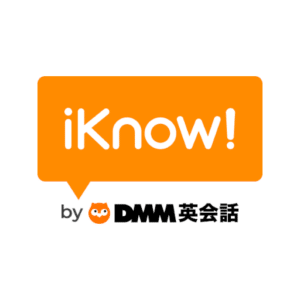
Formerly known as SmartFM, iKnow has a massive collection of Japanese vocabulary.
It’s primarily a vocabulary learning tool, but teaches a variety of grammar skills with its use of spaced repetition systems (SRS) and different testing methods. You’ll learn grammar in context as you’re exposed to the example sentences.
The app is made by native speakers and has a really high level of accuracy and natural usage in both the audio and text. You can try out their web platform and get five free sessions before deciding if you want to purchase a plan.
iKnow isn’t the cheapest learning platform, but it’s one of the best. The quality is worth paying for, in my opinion. Their web and app sync, which means you can pick up studying where you left off when you’re out and about.
4. Human Japanese
Lite intermediate version iOS | Android
Human Japanese helps you study grammar in context, with detailed explanations and native speaker audio throughout. It’s built into chapters with detailed English explanations of grammatical points and over 1,800 native speaker audio clips.
Each chapter ends with a review quiz to make sure you’ve understood the major concepts. Vocabulary and grammar are also available for every sentence, should you need to clarify meaning.
Human Japanese is highly praised by many Japanese study bloggers and YouTubers, and for good reason. The scope and effectiveness of their apps means they’re a great option for many learners. It’s especially encouraging that they have intermediate apps too, as most apps are designed for beginners alone.
There are a few versions of the app available. We’ve linked the free versions above, but they also have a beginner (iOS | Android) and intermediate version (iOS | Android) available for $9.99 that will give you the full experience. There are over 40 chapters, so you really get a lot of information for your money.
5. Memrise

Memrise is a wonderful free platform. It offers an enormous range of user-generated courses, meaning you can study material someone else has already prepared or make your own specialist course.
Do you want to create a course on the new grammar you encounter in that awesome Japanese novel you’re reading? Create it right on their website!
Just enter the information you want to study (i.e., an example sentence containing the grammar point you want to learn along with the English translation), then start studying using your new course.
This makes it suitable for absolute beginners to those who are mastering classical Japanese literature. You use mnemonics created by other users, or you can create your own. I’ve used mnemonics for vocabulary and kanji learning for years, and it’s proven to be a highly effective method for me.
6. Mondly
This app is made by the Mondly platform. It’s free for the first few levels, then requires a subscription. Because it has a recording function, it’s great for verbally reinforcing grammar you’ve learned.
Verbal repetition will help the sentence patterns begin to feel natural. Like the lyrics to a favorite song, you’ll just know when something is right without thinking about it. This app will also prepare you for using Japanese in Japan by integrating speaking and listening from the start.
I learn most efficiently through speaking and listening, so this app is perfect if you’re like me. It features review games, progress tracking, leaderboards and adapts to your learning style to keep you motivated.
7. HiNative
On HiNative, users can ask questions and connect with native Japanese speakers. This app is free, though premium upgrades are available through in-app purchases.
The great thing about HiNative is that you’ll get a variety of answers from people who use the language daily. This makes it perfect for asking questions about grammar in context, word choice and natural usage. You could also ask about the nuances between two words or phrases that mean the same thing in English but vary in subtle ways in Japanese.
It’s great for learners of all levels and is a fun community to be part of. The lively nature of the app helps you stay motivated since you’re seeing Japanese in action rather than as stiff words on a textbook page.
There are features to hone pronunciation and to improve weaker points. Having a massive community of helpful native speakers at your fingertips gives you the immersive experience of being in Japan and understanding Japanese as it’s used by native speakers.
8. Japanese
I love this app and use it many times a day. While many people rave about the app imiwa? (which is also great), I don’t regret my decision to upgrade to this app. It used to cost, but now it’s free. So try it and see for yourself!
There are a ton of great features—conjugation charts for every verb, reference guides for parts of speech and JLPT level vocabulary lists. You can also paste in text and use the app as a translator.
It even has SRS study flashcard capability with vocabulary lists you can access. Of course, you’re free to create your own flashcard set, making it a great asset for advanced learners trying to learn highly specialized Japanese.
All of these features are in addition to an excellent dictionary, where you can search by drawing a kanji, typing in Japanese or English or searching by kanji radical. It’s the only dictionary I use. I even think it’s more than adequate as a substitute for an electronic dictionary.
9. Genki Conjugation Cards
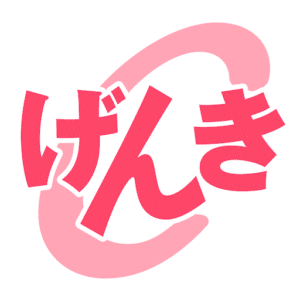
This app is designed for learners using the wonderful Genki textbook series.
There are a lot of online resources and other apps available on their resources page, including a lot of great stuff in their self-study area. This app will help you master the verbs and adjective conjugations covered in their textbook.
If you’re learning from Genki, using this app will ensure a smooth transition between learning resources. You’ll also use your time more efficiently because you’re mastering verbs and adjectives that you’ve already been introduced to.
It’s not free like some apps, but the quality of the resources is consistently excellent, as evidenced by their enduring success and widespread use through universities and Japanese teaching programs.
10. Japanese Grammar Handbook
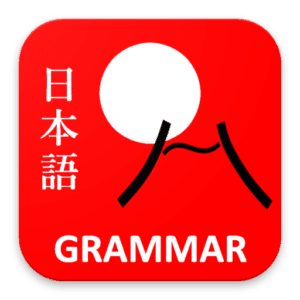
This simple app has a lot to offer. It covers Japanese grammar for JLPT N5 to N1. There’s an integrated grammar dictionary with examples of the meaning explained, multiple-choice testing and options to flag grammar you want to focus on.
You also have the option to select the level most relevant to you. The app shows you the grammar formula for usage, the native Japanese text, romaji transcription, English meaning and an example sentence. It’s ad-supported but free to download and access all content.
11. Obenkyo
Obenkyo has overwhelmingly positive reviews. It’s a very comprehensive app—integrating grammar alongside in-depth kanji and vocabulary study. There are around 100 example sentences, and it also integrates Tae Kim’s grammar guide.
This free app, supported by ads, really offers a great deal to the Japanese learner and is a good one-stop-shop if you’re looking for a free beginner-intermediate solution.
Bonus App: FluentU
To see how grammar works in real life, the website and app FluentU lets you observe sentence structures you learn from the apps above through the lens of Japanese media. With authentic videos like drama clips, news reports and music videos, you’re immersed in the language that’s naturally used by native speakers.
The videos come with interactive captions that display definitions and quick grammar notes, so you can learn every word in context. And for words you need more practice with, simply click on it to add it to a personalized vocab list. You can also review your newly acquired terms and phrases through SRS flashcards and custom quizzes.
What Are the Rewards of Focusing on Grammar?
A good grasp of Japanese grammar will help you get the most out of every word, kanji (adopted Chinese characters) or phrase that you commit to memory. Grammar puts these pieces together so that you can formulate complete thoughts.
Time spent improving your grammar is time well spent. Here’s why:
- You’ll be able to express yourself with the vocabulary you already know.
- It’ll be easier to understand you, and you’ll be able to form more meaningful connections with people when speaking Japanese.
- Improving your grammar will help both your spoken and written Japanese.
- There a lot grammar principles you can master without knowing kanji. This means you’ll quickly learn to read and write without being held up by a lack of kanji knowledge.
- You’ll get more opportunities to participate in conversations and follow more of what’s happening in the Japanese material you’re using. This, in turn, boosts your motivation and makes you want to learn more.
- Grammar gives language its meaning. If you learn grammar and words in the context of sentences, you can pick up some new kanji, vocabulary and grammar all at once. It’s more efficient and natural to acquire language this way, and we’re more likely to remember things we learn in context.
Tips to Make the Most of Learning with Apps
There are lots of ways to integrate the use of smartphone apps into your day. Consider using the following tips to make sure you’re getting the most out of what you’re using.
Make sure you can’t ignore the apps
Put your Japanese apps in a prominent place on your phone screen, preferably the first page near other apps you most commonly use. Make sure the apps are very visible.
Also, enable daily reminders. Get your phone to motivate you by reminding you it’s time to study. Most apps have these features built in. There’s no point having an app unless using it becomes a regular habit.
At first, it may seem like a drag, but soon you’ll be studying without a second thought and you’ll start to see real results with minimal effort.
Review regularly
Review just before bed and again in the morning. Just be sure to use a blue light filter or night shift setting on the iPhone to make sure you don’t disrupt your sleeping patterns.
An article from Harvard Medical School goes into more detail about the importance of sleep when learning.
I’ve found the best combination personally to be to study at night and review over breakfast, then review once again later in the day. Try out different methods and see what works best for you.
Build study into your routine
This tip takes the most effort initially but also produces the greatest results. Try to become aware of whenever you’re not being active during the day and use that time to study.
It could be that you’re waiting for your coffee to brew, waiting for the bathtub to fill or there’s a commercial break in a TV show you’re watching (hit mute and study!).
Mindfulness is key in identifying this “dead time” in your day. Once you start to see just how much of it there is (and realize you could review five kanji flashcards in a single minute), you’ll realize that you can get a lot more out of your day.
Use every free minute, within reason
Once you’ve started to notice that free time, be sure to use it. Remember though, that we all need non-screen time and studying relentlessly can be damaging to our well-being and relationships with others.
So put the phone away if someone’s gone to great lengths to cook you a meal and wants to have a conversation over dinner, or if you need some time to clear your head through meditation or exercise.
Explore features thoroughly
Many apps have a built-in range of study options. As we mentioned above, some have review tests or flashcard functions embedded. Get the most out of your apps by fully exploring their features.
Set daily goals and track your progress
Many apps have built-in tracking features, which are very handy. Make sure you set yourself achievable goals and stick to them without fail to see real improvement over time.
Make yourself part of the larger learning community
Taking an active part in a community of learners will help your motivation. Bigger apps like Memrise and Tae Kim’s Guide to Japanese have very active groups on social media and through the apps.
The more you’re accountable to others and have a community to boost your morale, the more you’ll focus and learn.
Of course, these are just some of the great apps for learning Japanese. Take advantage of all of these options and start squeezing more Japanese grammar study into your day.
So hit the download button, charge your phone and get set to take your learning to the next level!
Download: This blog post is available as a convenient and portable PDF that you can take anywhere. Click here to get a copy. (Download)





